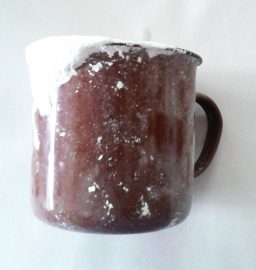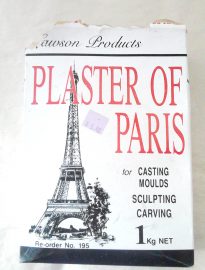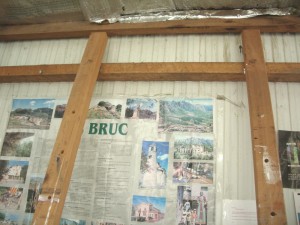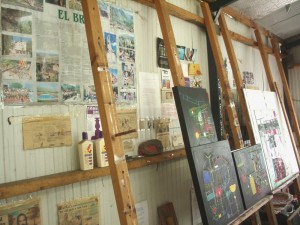I love Gesso paint and use heaps of it in my work. It’s gritty, chalky and can be applied to artwork to give a translucent or opaque look. It’s also very expensive so I decided to make my own.
Gesso is used for many things such as a primer for canvas or on paper to give a good base for painting, drawing or mixed media work. When making collage I use it as a gluing medium to stick on papers, in-between, painting and drawing layers.
The recipe below makes 2 litres of Gesso paint
( If not using straight away, this Gesso will last approx. 4-6 weeks)
Homemade Gesso
PLASTER MIX
1 cup Plaster of Paris or fine white plaster powder
1 cup of PVA or white glue
1 cup hot water
PAINT
3 cups white acrylic paint
UTENSILS
Container, cup and mixing stick or spoon
RATIO: 1-3
Plaster Mix 1 – Acrylic paint 3
Method
To make the plaster mix. Add the plaster to the hot water and stir ( Safety purposes: always add the plaster powder to the liquid, not liquid to plaster, as it will blow up into your face and always wear a dust mask)
Dust Mask
“Plaster of Paris” and cup
Hot water and mix
Next add the PVA or white glue, stir.
Finally add the white acrylic paint and mix. ( I used some acrylic powder paint I had and made it up with water) You can use any kind of acrylic paint or colour .
Result
I was very happy with the result. The gesso is translucent with the gritty bits I like. You can also do several layers of gesso to give a more opaque appearance. It covered my canvas very well with only 1 coat. When adding more than 1 coat you can sand in- between to give a really smooth surface for detailed work .
2 litres of Gesso
Gesso on stretched canvas
Gesso on paper
To see this and more of my free tutorials, please go to Tutorials I even show you how to make my large studio easel.




















